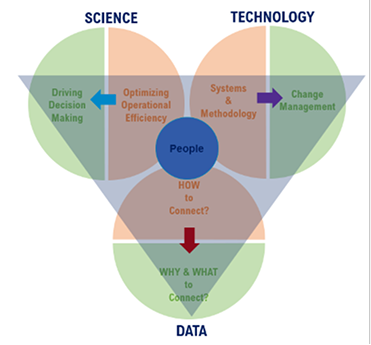A Bench Scientist’s Venture into Lab Informatics
So, your organization is undergoing a Laboratory Information Management System (LIMS) implementation, now what? You may have found yourself here because you or a member of your team have been asked to be a Subject Matter Expert (SME) on the project or you may even be soon transitioning from a Bench Scientist into a LIMS Administrator for your company. Although this transition may be intimidating, as a seasoned Bench Scientist, you have more knowledge of Lab Informatics than you may think. From industry regulations to daily lab processes, your knowledge of these areas will allow you to excel in a LIMS Admin role. Below are some examples where your experience will help you succeed.
Knowledge of Industry Regulations
What You Know
Some of the most important knowledge that Bench Scientists possess are the ins-and-outs of regulated industries. From Food and Drug’s Current Good Manufacturing Practice (CGMP) to Petrochemical’s National Emission Standards for Hazardous Air Pollutants (NESHAP), and everything in between, you understand the importance of following these Federal requirements. Additionally, you understand that the data and results you enter are what demonstrate compliance with these strict guidelines. Unfortunately, inadvertent typos can occur, which skews results and causes your company to appear out of compliance. This is where a LIMS application can help you keep your laboratory compliant.
What LIMS does for You
Configurations such as product specifications and audit trails function to track data modifications. Your limits for in-spec or out-of-spec results are applied through product specifications and can be defined even further into release or stability products. When a product fails to meet these requirements, it will be automatically flagged as out-of-spec. This is where audit trails become a necessity. When a result is changed, the audit trail captures this change with details such as user account, time/date, original and modified result values, as well as a reason for the modification if required by your organization. LIMS applications can also integrate with instruments and software to eliminate transcription errors, thus improving data integrity.
Takeaway
Your direct insight of rules and regulations will ensure that your company is compliant within its industry. By configuring and maintaining your LIMS application with the features mentioned above, your laboratory’s data will be accurate and readily available in the case of an internal or external audit.
Understanding the Laboratory
What You Know
- Key Data Elements: By understanding the laboratory, you understand that data is the foundation of its functionality. Data is used in every aspect of the laboratory, from sample information to test results, from user accounts to instruments. Details such as locations and result units play a major role when configuring a LIMS. Your knowledge will allow you to outline the data for the developers to ensure that LIMS is configured accurately and appropriately for your lab’s needs
- Processes and Workflows: A great example of your knowledge transitioning perfectly into Informatics is through the understanding of laboratory processes. You use these processes daily and that inside perspective can help streamline functionality in LIMS applications. By mapping out the processes prior to development, they can be more easily transitioned into LIMS. This also enables you to find gaps or bottlenecks in your processes which can then be improved in LIMS to increase efficiency and compliance.
- Stock Management: As a scientist, you have firsthand exposure to which reagents and buffers are most frequently used and which are used less frequently. This may seem like a small piece of the puzzle, but any scientist understands the disappointment when you are out of a necessary reagent, and your experiment is delayed until more can be ordered.
How LIMS works for you
- Key Data Elements: LIMS applications break down your data into Static and Dynamic data. Static data such as user accounts, test methods, and storage locations are configured during development and allow your LIMS to function smoothly. Dynamic data such as test results and audit trails are created during use of the application. Historical data can also be migrated into LIMS for trending reports and audit readiness.
- Processes and Workflows: Your point of view as a scientist can be directly translated into how the application is configured for your laboratory. LIMS workflows are configured based on the specific processes of your laboratory to make work smoother and more productive, a true win-win for both the scientists and the company. Your lab processes knowledge will also enable you to quickly and efficiently perform any workflow maintenance that is needed, further reducing downtime.
- Stock Management: During development you can provide invaluable insights into the setup and maintenance of the stock management modules that many Informatics systems offer. Also, by maintaining stock quantities inside your LIMS application, users will have access to the current quantities as well as the ability to trigger an email to the appropriate party when orders need to be placed.
Takeaway
As a LIMS Administrator having a high understanding of the data, processes, workflows, and components of your laboratory will guarantee that any modifications necessary in your LIMS application can be made in a timely fashion to prevent any downtime or loss of production.
Familiarity with LIMS Applications
What You Know
Many Bench Scientists, like you, have or will work in many different laboratories throughout their careers. Multiple laboratories typically equates to using multiple LIMS applications which gives you a diverse amount of end user experience. The major benefit from your variety of experience is seeing what works well and what doesn’t work well when it comes to LIMS applications and different system layouts.
How LIMS works for you
End user experience gives you a head start when learning the inner workings of the application because you have used similar functions to the ones that you will be maintaining. You know when something isn’t working correctly and can more easily find a solution. That specific knowledge benefits the entire lab because you understand how to setup the application to best suit the functions of your laboratory.
Takeaway
As a veteran scientist, you have insider knowledge from working with other LIMS applications. This experience will aid you during the initial development and continued maintenance of your system.
.Summary
The above factors as well as many others give you a head start in successfully transitioning into Lab Informatics. Your laboratory background will give you vital insight into how a LIMS application should look and function, and when used correctly will lead your company to more streamlined and increased productivity.
To find out more about how Zifo can help you and your company, please contact us at info@zifornd.com



